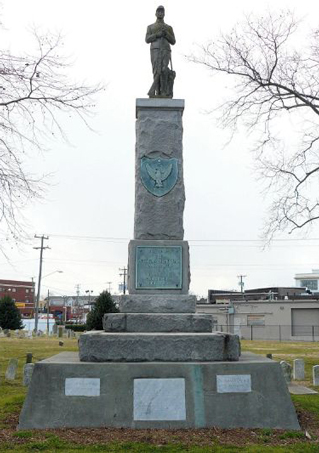I did a search for monuments to Frederick Douglass, and was surprised to see the sheer number of them. I need to do some clean-up to the text in this blog entry, but I thought that readers might be interested in seeing this right now. I will finish editing the wording in a few days.
From Wiki: A statue of Frederick Douglass sculpted by Sidney W. Edwards, sometimes called the Frederick Douglass Monument, was installed in Rochester, New York in 1899 after it was commissioned by the African-American activist John W. Thompson. According to Visualising Slavery: Art Across the African Diaspora, it was the first statue in the United States that memorialized a specific African-American person.
Per the Maryland Office of Tourism: FREDERICK DOUGLASS STATUE AT MORGAN STATE UNIVERSITY; the eight-foot tall bronze cast of Frederick Douglass, completed in 1956, stands in front of Holmes Hall on the campus of Morgan State University on the main historic academic quad. Artist James E. Lewis, chair of the Art Department, was chosen to design and sculpt the monument. Morgan State is a historically black university.
From NYC Parks: Frederick Douglass Memorial, located in Central Park North and Frederick Douglass Boulevard; dedicated September 20, 2011
Frederick Douglass Memorial; Location: Easton, MD; Year: 2011. Famed abolitionist, orator, and former slave, Frederick Douglass stands before the Talbot County Courthouse in Easton, MD. Douglass was born 5 miles from the site and was incarcerated in the courthouse as a youth.
From Wiki: Frederick Douglass is a 2013 bronze sculpture depicting the American abolitionist and politician of the same name by Steven Weitzman, installed in the United States Capitol Visitor Center‘s Emancipation Hall, in Washington, D.C., as part of the National Statuary Hall Collection.
From Wiki: Frederick Douglass is a public artwork in front of the Hornbake Library at the University of Maryland in College Park, Maryland. The statue memorializes African-American abolitionist, suffragist, and labor leader Frederick Douglass. It was unveiled in 2015. The statue was designed by sculptor Andrew Edwards.
The Frederick Douglass Sculpture on West Chester University’s Campus in Pennsylvania. According to The WC Press, Douglass gave his last public address, before he passed away, at the University. The cane in the statue is based on a staff that was given to Douglass by Abraham Lincoln. Installed the 2010s.
Fredrick Douglass monument at Hillsdale College in Michigan. Hillsdale College was founded in 1844 by abolitionists known as Free Will Baptists. Douglass spoke at the college on Jan. 21, 1863. The monument was installed on-campus in 2017.
Statues of Abraham Lincoln and Frederick Douglass at the National Harbor in Prince George’s County, MD. Installation date unknown.
Monument to Frederick Douglass at the Maryland State House. Installed in 2020.
Douglass famously said during the Civil War, “Once let the black man get upon his person the brass letters U.S., let him get an eagle on his button, and a musket on his shoulder, and bullets in his pocket, and there is no power on the earth or under the earth that can deny that he has earned the right to citizenship.” He recruited black men to join the US military during the Civil War, and met with Abraham Lincoln twice during that conflict.







 Civil War historical re-enactor David Flemming, right, stands by a bronze sculpture honoring black soldiers who served in Key West, FL. The dedication ceremony took pace on February 16, 2016.
Civil War historical re-enactor David Flemming, right, stands by a bronze sculpture honoring black soldiers who served in Key West, FL. The dedication ceremony took pace on February 16, 2016. 








